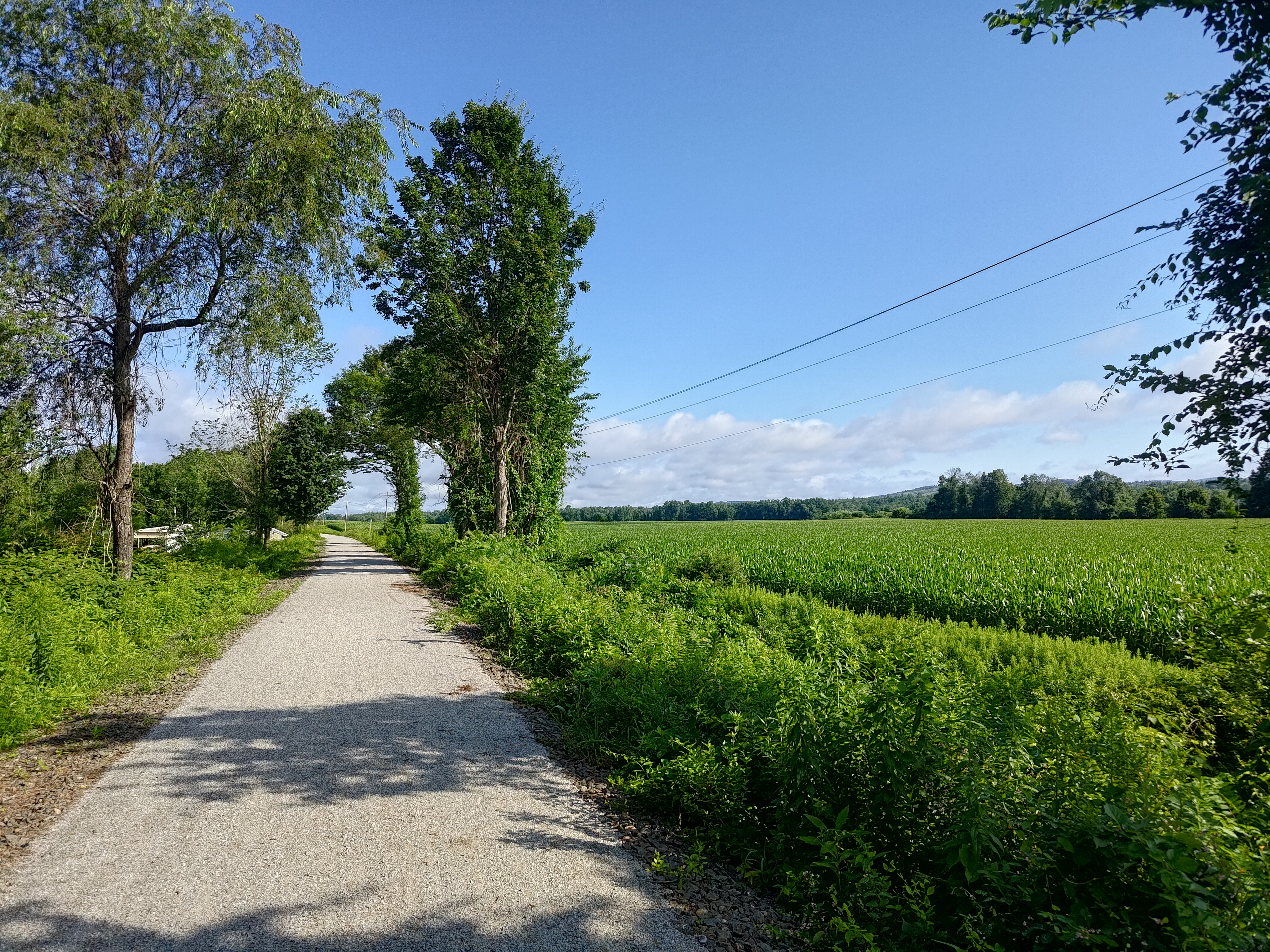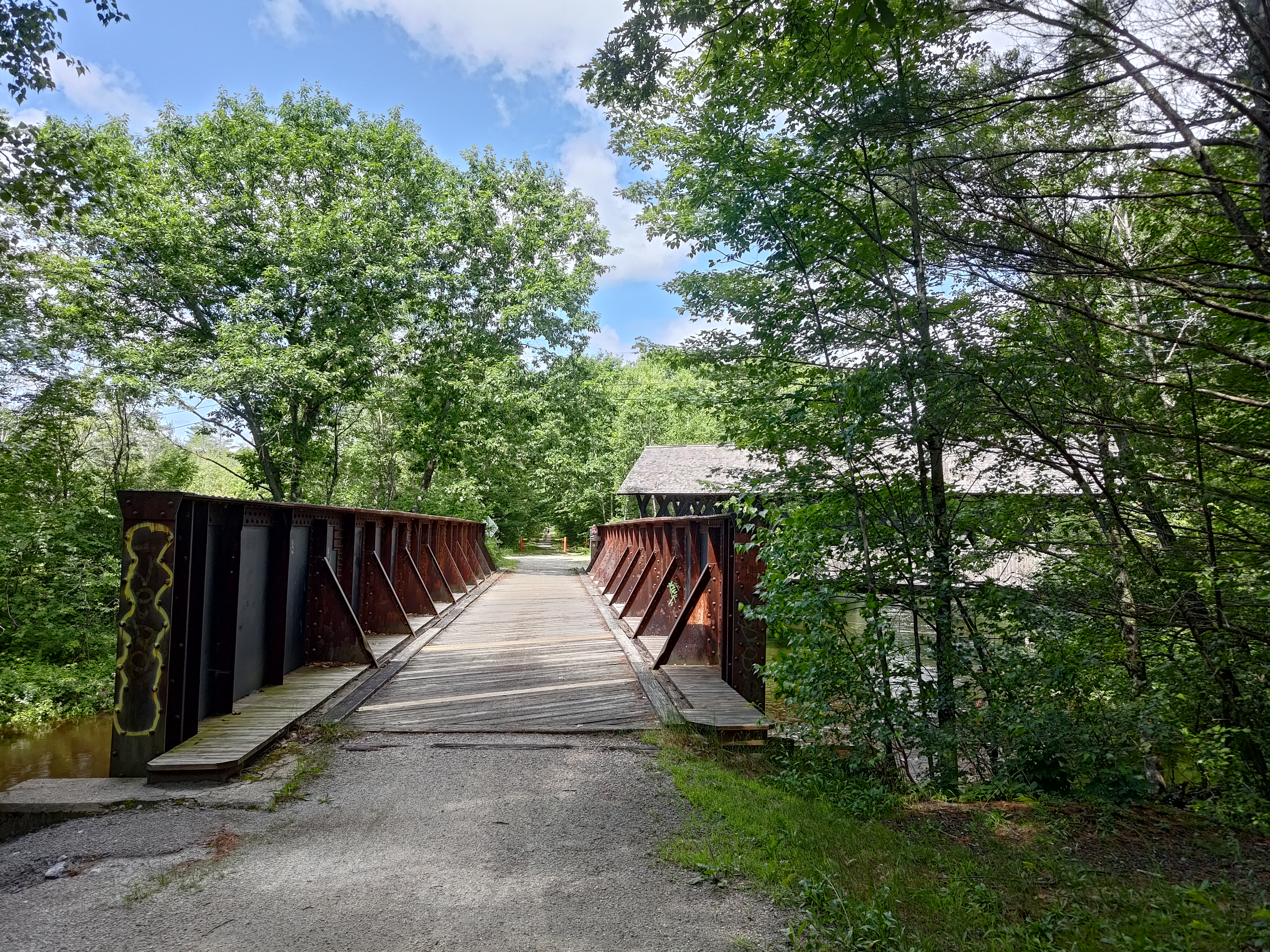Gravel biking is taking off in a big way. Its combination of speed and route finding has riders linking up trails, dirt roads, and country lanes for long trips away from traffic and congestion. Yet we don’t give a lot of thought to how many routes came to be.

Envisioning Rails to Trails
Trail users in New England owe a lot to Craig Della Penna, a real estate broker from western Massachusetts who had the vision—and stamina—to advocate for the conversion of old railroads to trails. It started in the mid-90s when he wrote a series of books about converting rail rights-of-way to trails. At the time, he had been working for a railroad but soon thereafter became the Rails to Trails Conservancy’s New England representative for seven years (1997-2004). He’s now executive director of Norwottuck Network and specializes in selling real estate near rail trails, which are still near and dear to his heart.
“I live and breathe dead railroads,” he quips. And for good reason—he lives “eight feet from one of the oldest rail trails in the country,” the Northhampton Bikeway, operating the Sugar Maple Trailside Inn with his wife, Kathy, in Florence, Mass. Within 150 miles of Della Penna’s home in western Massachusetts is what he describes as “the densest network of dead steam lines in the U.S. that used to go to Gateway Cities” like Fitchburg, Holyoke, and Pittsfield. Turning these into rail trails, he projects, will lead to “public investment in roads and parks” and in 25 years could have Massachusetts’ biking infrastructure looking “more like the Netherlands.”
Places Benefiting Economically from Rail Trails
To too many, rail trail conversion is “seen as a frivolous sidebar thing.” This, he contends, is shortsighted, pointing to New York’s 750-mile Empire Trail and Vermont’s 93-mile Lamoille Valley Rail Trail as examples of state leaders realizing the economic benefits of investment in long-distance bike trails.
There are examples closer to home, too. In the early 1980s, Massachusetts built the Cape Cod Bike Path, a 19-mile stretch of pavement running up the spine of the state’s summer playground (it’s now 26 miles long, from Yarmouth to Wellfleet). Around the same time, another former railway was turned into a bike and pedestrian trail by the state, the 11-mile Norwottuck Rail Trail linking Belchertown and Northampton. Both are now extremely popular recreational paths.
Overcoming the Opposition to Rail Trails
Of course, securing the ability to convert rails to trails isn’t easy, particularly for long-distance trails. Many longer-distance rail trails like the Mass Central Rail Trail, of which Della Penna is a major proponent, face opposition from abutters or town officials concerned about outsiders having access to their open spaces. For instance, Della Penna points to the Town of Sudbury, which has fought the Mass Central Rail Trail to the tune of $1 million, with legal battles reaching the state Supreme Judicial Court.
The opposition has not discouraged Della Penna. In fact, he’s more like the Weather Channel’s forecaster who shows up when things go south. He speaks at town, planning, and select board meetings, often traveling hundreds of miles a week to explain the significant public benefits of rail trails.
I first met Della Penna around 2000, when he helped a small group I was reporting on that envisioned a better future for a railroad spur used once or twice a week by a frozen foods company. He visited and revisited Natick four times in subsequent years to inch forward a proposed multi-use rail trail and to help overcome opposition. The path, which was finally funded in 2018 and completed in 2021, runs parallel to Route 27 for four miles, connecting downtown Natick to Framingham’s trails in Saxonville. It was Della Penna’s patient persistence, coupled with relentless advocacy by town groups, that convinced town leaders and nearby homeowners that rail trails are positive features.
As Della Pena’s experience shows, the time it takes to motivate people from “no way!” to “okay!” is usually counted in years. However, Della Penna is persistent, able to keep chipping away because, in his words, he doesn’t “have kids to dote over” and isn’t “old enough to golf.” He also wants to leave a legacy to future trail users, “to do something to prove I was here.”
Della Penna now believes he has game-changing ammunition, at least for the Mass Central Rail Trail. It’s a study commissioned by his Norwottuck Network that shows completing the proposed 104-mile trail from Northampton to Boston would result in $200 million in increased economic activity and bring in four to five million visitors per year. Segments of it are complete or under construction, with Della Penna among those working to “reassemble this thing inch by inch.” Putting together the pieces, Della Penna says, will benefit forgotten towns like Gilbertville, which he says is an intact Civil War-era enclave frozen in time (it’s on the National Register of Historic Places).

Looking to the Future
Progress is happening, but slowly. A younger generation, Della Penna says, is moving in and seeking to live near trails. They can’t imagine why anyone would oppose these bucolic byways.
Rail trail projects are moving forward as well. For example, the Norwottuck Network and the Mass Central Rail Trail are hosting a Golden Spike conference in Natick in mid-October to showcase what’s possible and gather steam to propel the project over one more hill of opposition.
So, next time you enjoy the crunch of gravel or a satisfying run of trails from the New Hampshire border to Connecticut’s Airline and back, think of those who provided you this privilege.
Alison O'Leary
Alison O’Leary is an avid cross country skier, author, and public speaker. See alisonoleary.com.
Related Posts
April 12, 2024
Explore Like a Local: The Outdoor Mecca of North Conway, NH
There's a lot to love about this New…
April 3, 2024
5 Things To Do in the Boston Area During Mud Season
Adventure opportunities are abundant…




